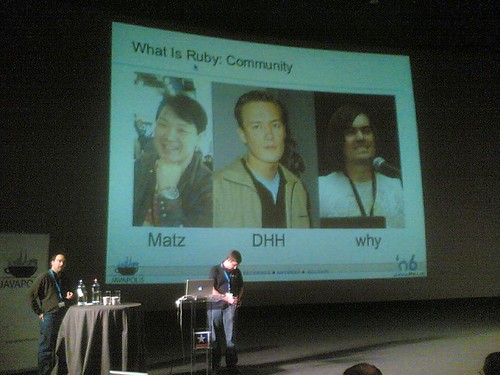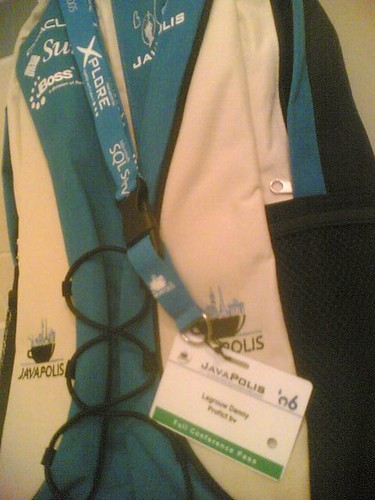JavaPolis day 2, Best of Both Sides
I’m being urged to choose sides. Colleagues say I should specialize in either frontend or backend development. I’ve never liked to commit to any specialization. Partly because I’ve always admired the renaissance ideal of the uomo universale who knows and does it all. But also because, when I started out my career, 20 years ago, jobs were a lot scarcer then nowadays, so you couldn’t be all too picky about which job you wanted to do. Specialization is nice until the market changes and you find yourself out of a job because you happened to choose the wrong side.
All this might explain why I enjoyed a full day of Swing yesterday at JavaPolis, even though my day job is now exclusively about backend domain design and coding (and I love it, I love being in the silend, cold spelonks that the domain is, where everything perfectly fits, everything is under tight control with unit tests, and the evil outside world of user interfacing is far far away).
To be honest, the alternatives didn’t appeal to me either. A session on POJO programming–who on earth can talk about plain old POJOs for three whole hours? Or what about a Spring 2 session? Never mind, I’ll read the release notes. Now Swing, that’s something you want to see live. Not that there were many flashy demos though; just a very cool mashup that allows you to map your holiday snapshots to a route you can draw yourself on a Google map. Most of the time was filled with new Java SE 6 features, tips & tricks, a useful tutorial on Java Web Start, and an interesting but theoretical presentation on humane user interfaces (by Romain Guy).
Those new SE 6 features, they’re nice enough, sure; but it made me think back to my Delphi days, about 10 years ago, when we already had things like date pickers and hyperlinkable labels. In a way, it’s really the same as with all the fancy Ajax stuff. We’re all so excited about a web page that can behave like a desktop application; but if we’re actually developing a desktop application, then why bother with web pages when we could have made life easier and used Swing instead?
2006-12-13. 3 responses.




